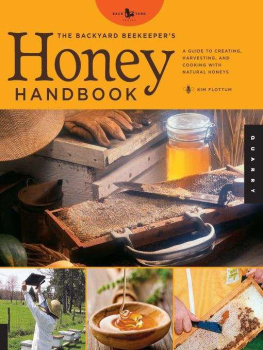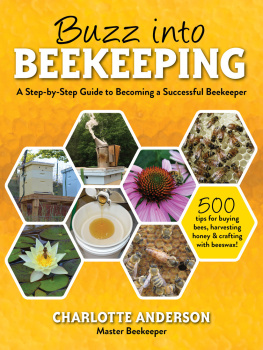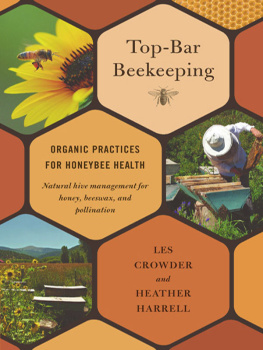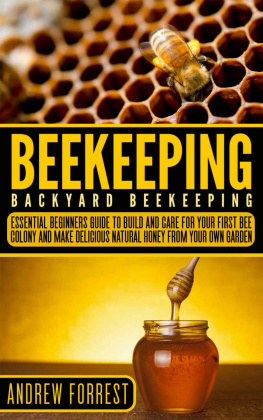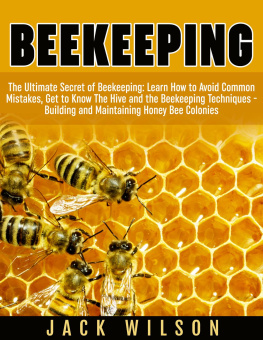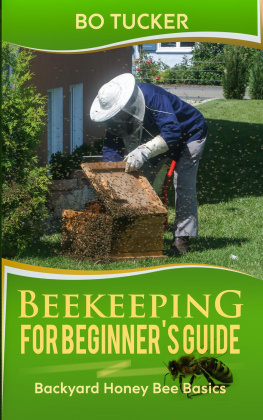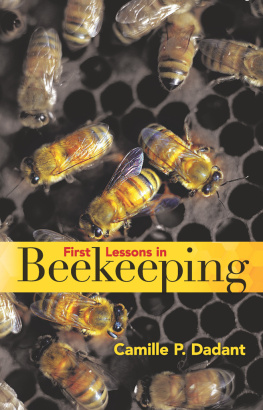BETTER
BEE
KEEPING
THE ULTIMATE GUIDE TO KEEPING STRONGER
COLONIES AND HEALTHIER, MORE PRODUCTIVE BEES
KIM FLOTTUM

Text 2011 by Quarry Books
Design 2011 by Quarry Books
First published in the United States of
America in 2011 by
Quarry Books, a member of
Quayside Publishing Group
100 Cummings Center
Suite 406-L
Beverly, Massachusetts 01915-6101
Telephone: (978) 282-9590
Fax: (978) 283-2742
www.quarrybooks.com
Visit www.Craftside.Typepad.com for a
behind-the-scenes peek at our crafty world!
All rights reserved. No part of this book may be reproduced in any form without written permission of the copyright owners. All images in this book have been reproduced with the knowledge and prior consent of the artists concerned, and no responsibility is accepted by the producer, publisher, or printer for any infringement of copyright or otherwise, arising from the contents of this publication. Every effort has been made to ensure that credits accurately comply with information supplied. We apologize for any inaccuracies that may have occurred and will resolve inaccurate or missing information in a subsequent reprinting of the book.
10 9 8 7 6 5 4 3 2 1
ISBN-13: 978-1-59253-652-8
ISBN-10: 1-59253-652-2
Digital edition published in 2011
eISBN-13: 978-1-61058-028-1
Digital edition: 978-1-61058-028-1
Softcover edition: 978-1-59253-652-8
Library of Congress Cataloging-in
Publication Data available
Design: Burge Agency
Illustration: , Peter Sieling
Printed in China
Dedication
Ive always thought of a dedication in the front of a book as an acknowledgment and a thank you to those people who, by unselfish acts, assisted the author in some way ... as a mentor, teacher, supporter, or faithful friend.
But, there are people who do those things because they are supposed to.
H. G. Wells once said, There is no human urge greater than the urge to change someone elses copy. It turns out though, that even great writers need editors. And the rest of us need really great editors. They see the wheat in the chaff and the trees in the forest.
Ive been lucky. First there was Winnie Prentiss, who simply asked if Id like to write a book about beginning beekeeping. They wanted one, and could I do it? She helped with The Backyard Beekeeper.
Then along came Rochelle Bourgault: A tiny sprite of a thing, who writes, teaches yoga, and knits in her nonediting time. She has shepherded The Backyard Beekeepers Honey Handbook, the revision of The Backyard Beekeeper, and now this work, too, from beginning to end. She even went to a beeyard with me and stopped to smell the honey and the bees.
If Im lucky, shell punch up this small effort. An editor wouldnt want just an average piece of work telling readers that the book is good because she helped. It should be as good, and maybe better, than the rest. Thanks, Rochelle.
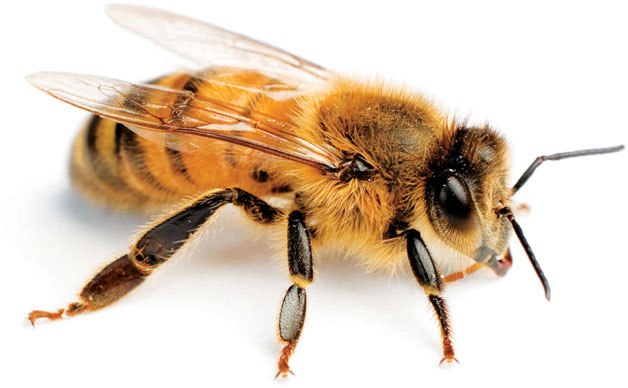
Contents
How Big Do You Want to Get?
or If Muhammad Wont Come to the Mountain ...
Finding the Best Queen There Is Royal Lineage
Or the Bees That Beekeepers Keep
or Baby, its Cold outside
Introduction
Some years ago I attended a lecture given by Dr. Hachiro Shimanuki, who was then the research leader of the USDA Honey Bee Research Laboratory in Beltsville, Maryland. Shim, as he is called, was discussing current problems beekeepers were having and the research his lab and others were involved in looking for answers to those problems.
I dont recall the particulars but when he was nearly finished he offered an observation that was, for the most part, missed by the majority of those present. They were more interested in his answers. Answers and dogma, went the feeling, saves bees, money, and time. Observations, on the other hand, were believed to be for spectators and scientists without a vested interest in the day-to-day workings or the bottom line of a beekeeping business. Those attending didnt want an either/or answer, but rather a simple yes or no.
Shims observations were, however, profound, and any beekeeper who listened carefully to his challenge is probably doing quite well today.
Basically, his observation was this: He called it the Rule of Rights. It is the inspiration and basis of this book.
If you produce the right number of bees that are the right age and in the right condition, and are in the right place at the right time, you will be successful.
The complexity of achieving this goal is well hidden in the simplicity of his statement. But to accomplish this requires making intelligent and correct decisions based on sound planning, correct timing, and getting the balance of business and biology to work in an operation. Theres little how-to hidden within this simple statement. Rather, it is a goal to strive for in many ways. It is, in the real world, not easy and it is not often that it is achieved. But when it is achieved, it is a thing of beauty.
What follows on these pages is my perspective of the application of Shims rule, applied to areas of beekeeping that are generally the most difficult to do well, and thus often overlooked. Primarily, well apply this rule of rights to producing honey, producing queens, overwintering in cold areas, and population control during the active season, which means swarming. And of course, there is the requisite section on dealing with the pests we all face. But these, too, can be viewed through the lens of the right rules.

Dr. Hachiro Shimanuki, Research Leader, USDA Honey Bee Research Laboratory, Beltsville, Maryland, Retired

The construction of a bee beard as large as this one is a perfect example of the rule of rights: the right number of bees (30 pounds, or 13.6 kg); of the right age (collected from the brood nests of many colonies so they are young and strongly attracted to a queen); in the right place (on Dr. Norman Garys body); in the right condition (the bees have been held queenless for several hours, so are strongly attracted to the vials of queen pheromone around his neck); at the right time (had the bees been required to remain queenless for longer, or shorter, the attraction would not have been as strong).
The information offered here comes not from any wisdom I have gained as a beekeeper for the thirty-plus years Ive been lighting smokers and opening hives, but from the hundreds, no, the thousands of beekeepers I have had the good fortune to know, observe, and learn from. They, not I, provide the wisdom and experience you will find here. Rather, my role is to gather, analyze, evaluate, and offer the information gleaned from those who worked to produce it, and then only after it has passed through some set of filters manned by those who still offer answers and make observations. Wisdom, it seems, has many sources. In the end you can pick and choose just the right bits for you, at your pace, sized and priced for your operation.
No matter the scope of your operation, whether 5, 500, or 50,000 colonies, getting the most from your bees requires a delicate balance of business skills, well-managed labor, a fundamental understanding of the principles of honey bee biology and health, a keen sense of place, and cooperative weather, all mixed together with perfect timing and a little bit of luck.
Next page

